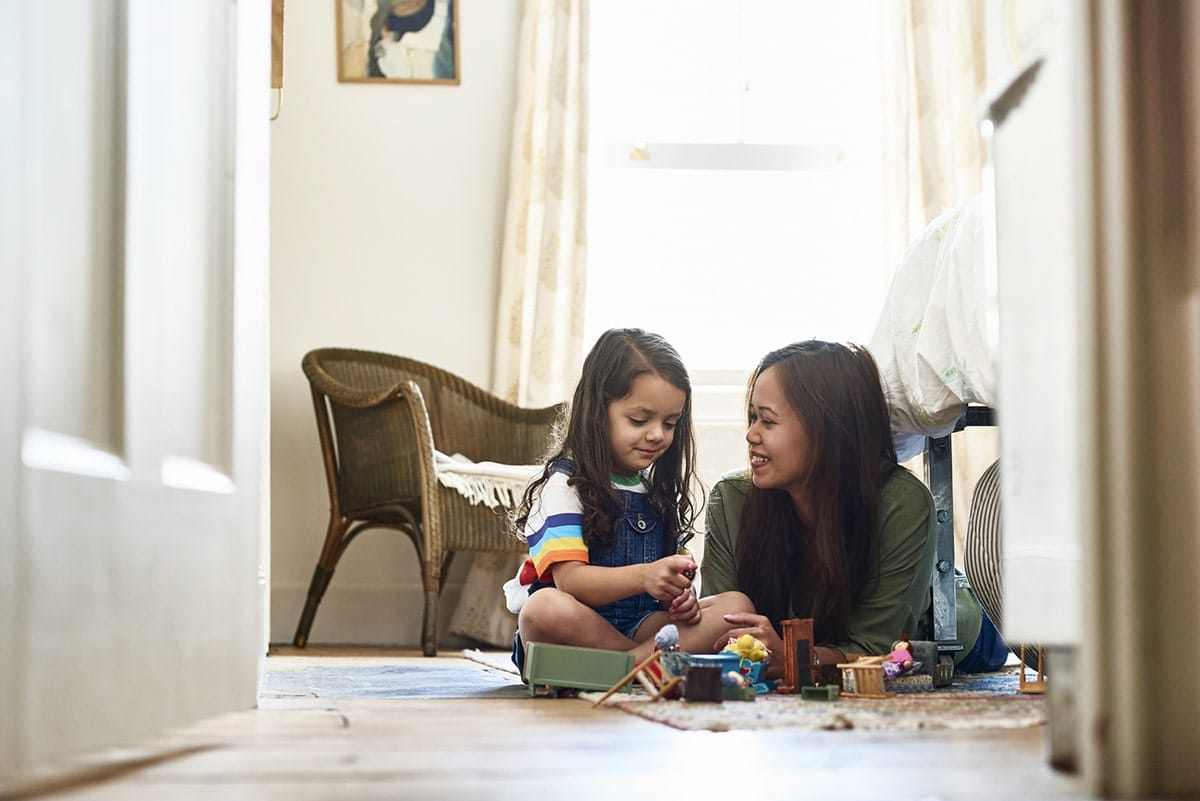I pulled out my childhood toys for my kids—and it was magical

Letting go as a parent, and witnessing my children as themselves, transported me back to my own childhood.
My husband and I had planned to spend the summer with our 2 and 5-year-old on sabbatical in Italy. We weren’t entirely sure how it would all translate with two young kids and no childcare. We just knew that he happened to qualify at a time when we needed a break from the daily grind. Then COVID-19 struck. One by one, like dominoes falling, countries shut their borders. We canceled our trip. Instead of dining upon tagliatelle with a glass of Sagrantino, we are raiding our wine stash in the basement and pairing it with Annie’s mac ‘n cheese.
During the first weeks of quarantine, I tried a Type-A approach to parenting: posting work, school and self-care schedules, meal planning menus and a cleaning regimen. I set high standards for myself for some good reasons. Since I’m self-employed, I had the twin privileges of flexible scheduling and part-time hours.
Nonetheless, the weeks of high-alert productivity from morning till night took its toll on me. I found myself predictably collapsing onto the couch each day after putting my youngest down for a nap. One day, as my eyes were fluttering closed, I spotted one of a number of boxes that my parents had shipped me after selling my childhood home two years ago. With kids under foot and a million things to do, it had been easy to let them sit in a quiet corner of the house. To my surprise, these toys became an unexpected source of inspiration at a time when I could really use it.
At the beginning, I felt highly motivated and energized to make things work. I tried to predict a problem before it happened. Without her teacher and peers around, would my 5-year-old lose her motivation for school? Would my 2-year-old resist naps during important work calls? I kept telling myself to create and maintain a daily routine at all costs, lest our new childcare/homeschool operation spin into chaos. I imagined chaos as the enemy: negatively impacting both of our careers and our children’s well-being.
On weekday mornings, I donned my favorite black-and-white checkered hat and pretended to be a substitute pre-K teacher. Each morning began with music and yoga and then we would go outside for a walk or to the park across the street. Homeschooling happened in the afternoons when my youngest was sleeping. For a time, this set-up seemed to go reasonably well. But gradually, as stress and strain mounted, my husband and I began to slip—forgetting to review math or start the day with circle time or get the kids enough exercise. The kids, of course, could feel it. There were more meltdowns and regressions, and fights for Mommy and Daddy’s attention. This created a not-so-healthy feedback loop as our moods soured as well.
Then came the day I spotted those boxes. My 5-year-old was just getting ready to pounce on me, when I asked if she would like to see some of my old artwork from when I was a little girl.
“Yeah!” she shrieked, as if I’d offered her an ice cream cone out of the blue.
She was easily wooed by many of my works from that period, including a watercolor and cray-pas dragonfly and a cartoon entitled: “I will NOT eat my mom’s meatloaf!” After that, sorting through stacks of my old artwork and stories (written with a number 2 pencil on lined newsprint) became a daily ritual.
The timing was remarkable, as these were stories about myself from a first grade perspective and she needed to practice her reading anyway. We laughed at some of my many endearing typos and she scolded me for not using “two-finger space.” She learned (and I recalled) all about my childhood and imagination, from revealing stories about her grandparents to how much I loved to celebrate holidays to the imaginary adventures of bunny rabbits.
That was my cue, and I took it.
Each day, we discovered another long-lost treasure: my Barbies and their bedazzled accessories, my mullet-sporting Cabbage Patch doll, my hand puppets that still squeak after 30 years. I taught my daughter how to jump rope with my old purple jump rope (now missing its handles) and sing rhymes. We set up a theater and both of my girls put on shows with my old cluster of puppets (who miraculously have not decomposed over the decades). I helped teach my older daughter how to ride a bicycle—and then how to flip it upside down and pretend it was an ice cream machine (like I used to do). When I exhumed my old Garbage Pail Kids from one of the boxes, I could hardly believe it. Those will be reserved for a later developmental stage.
As the school year drew to a close, I settled into a new rhythm with my two daughters. Rather than put on my teacher’s hat each morning and check the bulletin board, I found myself joining them in their boisterous curiosity. We frequently visited the neighborhood park across the street, where my girls dug up roly-polys and built them elaborate homes. Sometimes, we played “Follow the Leader” or “Simon Says.” Other times, they scooted around or drew chalk drawings. In May, I taught them hopscotch and we played hide-and-seek. In June, we made our own ice cream and threw family dance parties.
Letting go as a parent, and witnessing my children as themselves, transported me back to my own childhood.
Of course, not all parents have the time, resources or desire to be with their kids in this way. My family is privileged with two stable incomes, a comfortable home, our health, and a safe community. Both my husband and I have flexibility with our work hours, and this has allowed for shared responsibility with our kids.
One night, lying alone in our hammock after my kids were in bed, I squinted into the shadows and caught a glimpse of my child self: burying a tupperware time capsule in the woods behind our home, roaming our street with neighborhood friends, searching for frogs by the creek, and playing relay races at the block party as the sun went down. While my children churned out their own fresh experiences, I remembered my own. The common denominator? A sense of unrushed freedom and sensory immersion in the world.
Now in the height of summer, and in an attempt to survive life without childcare while working and doing it all, I’ve acquired some old faves which did not survive into adulthood: a sprinkler, a pogo ball, a bug catcher, a Lite-Brite, Twister, and a Pez dispenser. We’ve moved a piano into our home, and I hope to teach some of the basics that I learned as a child. Within the next few months, both of my daughters will celebrate birthdays. Should I buy the Barbie Dream House or the Snoopy Snow Cone machine? They just don’t make Hypercolor like they used to. Although, I have to say, buying new is just not the same.
There is something magical and intimate about watching my kids handle the same toys I once did.


































